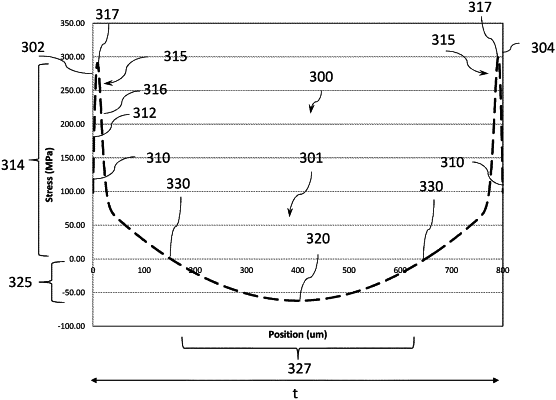| CPC C03C 21/002 (2013.01) [C03C 3/085 (2013.01); C03C 17/002 (2013.01); C03C 2217/78 (2013.01)] | 20 Claims |

|
1. A glass-based article comprising:
a first surface and a second surface opposing the first surface defining a thickness (t) and a center between the first surface and the second surface, the glass-based article comprising Li2O, ion-exchanged potassium and ion-exchanged sodium; and
a stress profile comprising a hump stress region extending from the first surface or a point below the first surface to an apex in a range of 0.001·t and 0.1·t, a compressive stress at the apex in a range of 25 MPa and 750 MPa, wherein at least one point of the stress profile of the hump stress region between the first surface and the apex comprises a tangent having a slope with a value from 25 MPa/micrometer to 500 MPa/micrometer, a decreasing stress region extending from the apex that decreases such that at least one point of the stress profile of the decreasing stress region extending from the apex toward the center comprises a tangent having a slope with a value from −20 MPa/micrometer to −200 MPa/micrometer until the decreasing stress region reaches a depth of compression where the glass-based article has a stress value of zero, the depth of compression being in a range of 0.1·t and 0.25·t, and a tensile stress region extending from the depth of compression to a maximum tensile stress, wherein the glass-based article comprises a thickness from 0.01 mm to 3 mm.
|